Ancient Thera Archaeological Site
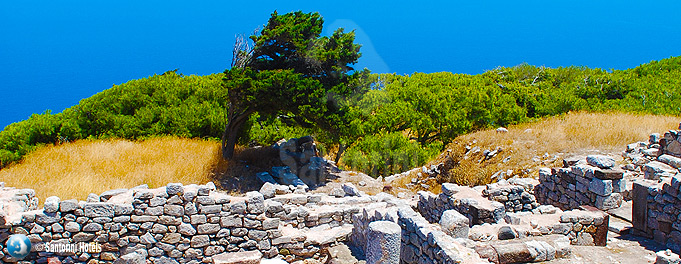 |
|
In the late 12th century BC, Dorians from Sparta arrived at Santorini, which was still called Kalliste then. They were led by king Theras and they named the island after him: Thera. They established the city of Thera in Mesa Vouno. The Theran community remained self-sufficient for centuries. During the Persian War, it was subjugated to the Persians and during the Peloponnesian War, it allied with Sparta. In 426 BC, it was forced to join the Delian League and went under Athens control. During the Hellenistic era, Thera was ruled by the Macedonians and the Ptolemies subsequently.
The town of Ancient Thera is one of the most visited places of Santorini. It was located on a fortified location, about 396m above sea level. The Dorians created a closed society that was influenced only by its close neighbors and only because of its strategic position.
|
|
Ancient Thera - Central Part of the city
|
The central part of the city, along the main street, is occupied by the Agora, meeting point of the inhabitants and centre of the public and political life. The central part of the Agora was the administrative centre. This is where the temple of Dionysus is located, a small Doric temple that was built in the 3rd century BC on an artificial terrace and was made from stone but for its roof and façade that were made from marble.
The southern part of the Agora was the commercial centre of the city. The Royal Stoa, which was built in the 1st century AD, is located there. The Roman Baths were next to the Royal Stoa. This was a public building of Hellenistic times, very popular during Roman times. At its north end, there was a public latrine. The baths were constructed in mid 2nd century AD and only the hot bath room has been identified with certainty thanks to the hypocaust, a hollow, under-floor space where the fire would burn.
|
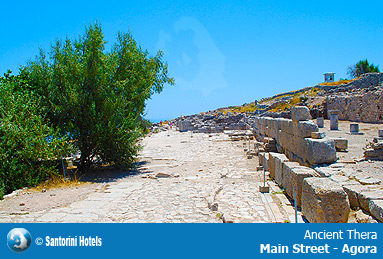 |
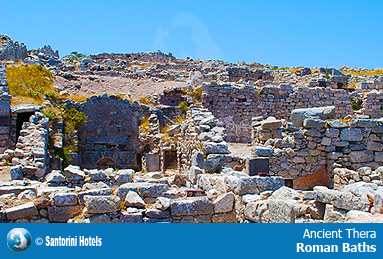 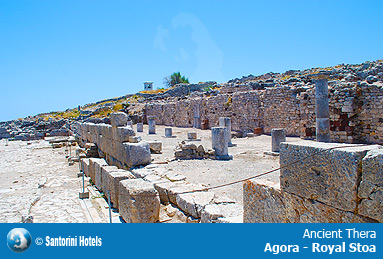 |
|
|
Ancient Thera - Northern of the city
|
The northern part of the city was also constructed in the Roman years and hosts the exedrae, three buildings in the form of temple, where the statues of the people that were honored by the city were standing. Today, only their inscribed bases survive.
|
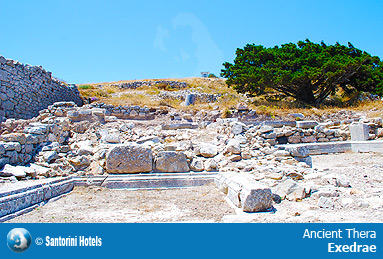
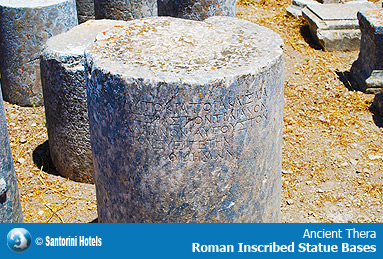 |
|
|
Ancient Thera - The Theater
|
Near the Agora, we also find the Theatre that was constructed in the 2nd century BC. Though small and simple, it was an imposing construction that was mainly used for assemblies.
|
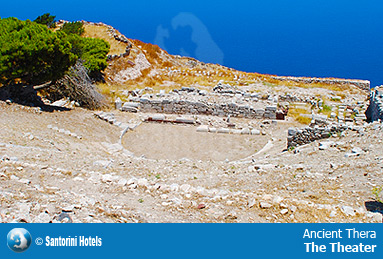 |
|
|
Ancient Thera - The Sanctuary of Artemidoros
|
The Sanctuary of Artemidoros was founded in the mid-3rd century BC. Artemidoros was a priest that moved to Thera when he was old, after a dream he had. The sanctuary was chiseled out of the rock by Artemidoros himself. Inscriptions, the symbols of the gods that were worshipped here and a portrait of Artemidoros are engraved on the face of the rock.
|
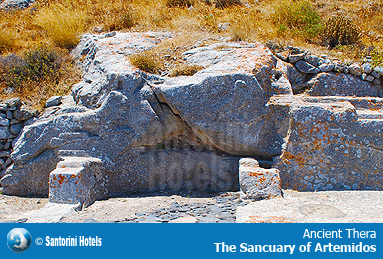 |
|














